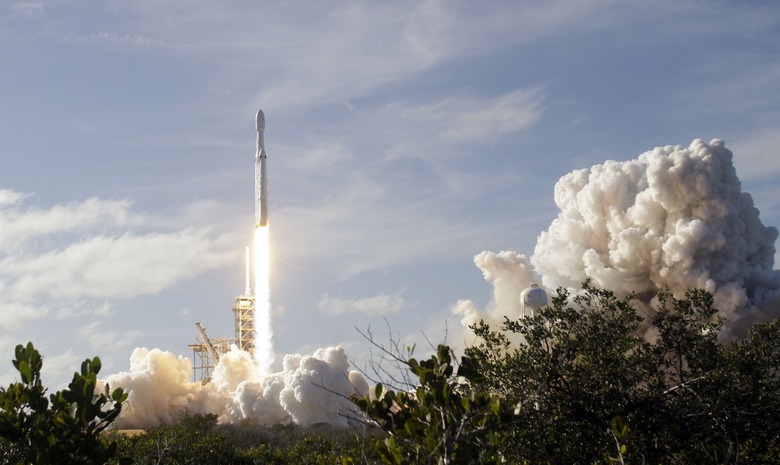SpaceX Broke Multiple Records With Its Launch Of 64 Satellites At Once
SpaceX is already the leading name in the realm of private space flight with many firsts to its name, but the company's most recent launch landed it in the record books multiple times over. The mission, which was launched from Vandenberg Air Force Base in California, delivered a whopping 64 tiny satellites into orbit, which is the most in a single mission in the history of U.S. spaceflight.
On top of that, the mission was performed using one of SpaceX's used (sorry, "flight proven") rockets, and its subsequent landing made it the first rocket to be launched and landed three times. It's not done, however, as it will head back into SpaceX's refurbishing program to be used again.
For decades rocket stages were built, used once, and then essentially disposed of when they were allowed to fall back to Earth and be largely destroyed upon impact with the ocean. SpaceX changed that with its reusable rockets that are smart enough to perform soft landings, though not without failing many times before perfecting it.
Now, with its latest version of the Falcon 9 rocket (the model called Block 5), the company can effectively recycle some of the most expensive components of its rockets while saving money and reducing turnaround time. The early Falcon 9 rocket stages proved that the model was viable, but the Block 5 is capable of being used up to 100 times before finally needing to be disposed of.
The company is still working on its systems for recycling the nosecone fairings of the rocket. This time around, the capture ship missed the nosecones but a tweet by Elon Musk explains that they touched down "softly in the water" which is a plus.
SpaceX clearly has its core business in good shape, which is impressive since it's literally rocket science, but there are still big questions moving forward. The company's relationship with NASA and partnership for manned space flights in the near future will be a major test.
